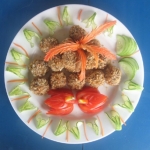Vinyl print installation has turn out to be a preferred alternative for companies and individuals looking to add a personal touch or promote their brand. From storeentrance home windows to vehicle wraps, vinyl prints offer versatility and durability. However, making certain a successful set up goes beyond just selecting the best vinyl. Equally necessary is selecting the appropriate surface for the vinyl to adhere to. Listed below are some dos and don’ts to consider when choosing the proper surface for vinyl print installation.
Dos:
1. Clean and Smooth Surfaces:
Opt for surfaces which can be clean, smooth, and free from any mud, dust, or debris. Properly clean the surface using a gentle detergent or alcohol-based cleaner to make sure most adhesion. Clean surfaces provide a really perfect canvas for vinyl application, minimizing the risk of bubbles or wrinkles.
2. Non-Porous Materials:
Choose non-porous supplies such as glass, metal, or plastic for vinyl installation. These supplies provide better adhesion compared to porous surfaces like wood or rough concrete. Non-porous surfaces forestall air from getting trapped beneath the vinyl, leading to a smoother finish.
3. Properly Primed Surfaces:
When you’re applying vinyl to a painted surface, make sure that it is properly primed and cured. Primer helps create a smooth and uniform surface for vinyl adhesion. Enable the primer to dry utterly earlier than applying the vinyl to prevent any points with bonding.
4. Climate-Controlled Environments:
Set up vinyl prints in a climate-controlled environment with moderate temperatures and low humidity. Excessive heat or cold can affect the adhesive properties of the vinyl, leading to poor adhesion or premature failure. Intention for temperatures between 50°F to ninety°F (10°C to 32°C) for optimum results.
5. Test Adhesion Compatibility:
Before proceeding with the full set up, conduct a small adhesion test in an not easily seen space to ensure compatibility between the vinyl and the surface. This helps determine any potential issues beforehand and permits for adjustments if needed.
Don’ts:
1. Tough or Textured Surfaces:
Keep away from installing vinyl prints on tough or textured surfaces, as they can intrude with proper adhesion. Uneven surfaces make it tough for the vinyl to adright here uniformly, leading to an unprofessional finish. Smooth surfaces provide the best adhesion and total appearance.
2. Dirty or Greasy Surfaces:
By no means apply vinyl to surfaces which might be soiled, greasy, or oily. Contaminants on the surface can stop the vinyl adhesive from bonding effectively, leading to peeling or lifting over time. Totally clean the surface and remove any grease or oil earlier than proceeding with the installation.
3. Wet or Moist Surfaces:
Do not attempt to put in vinyl prints on wet or moist surfaces, as moisture can interfere with adhesion and cause the vinyl to bubble or peel. Be sure that the surface is completely dry earlier than applying the vinyl. Keep away from putting in vinyl outdoors during wet or humid conditions.
4. Unprimed or Unpainted Surfaces:
Chorus from making use of vinyl directly to unprimed or unpainted surfaces, particularly porous materials like raw wood or concrete. Without proper priming or painting, these surfaces lack the smoothness and adhesion essential for vinyl installation. Prime or paint the surface beforehand for optimum results.
5. Excessive Environmental Conditions:
Avoid installing vinyl prints in extreme environmental conditions, equivalent to high winds, freezing temperatures, or direct sunlight. These conditions can compromise the adhesive properties of the vinyl and have an effect on the general durability of the installation. Select a suitable time and site for installation to make sure optimal conditions.
In conclusion, selecting the proper surface is crucial for a successful vinyl print installation. By following these dos and don’ts, you’ll be able to guarantee maximum adhesion, longevity, and visual attraction for your vinyl projects. Bear in mind to properly prepare the surface, test adhesion compatibility, and install in a controlled environment for the best results. With the precise surface and proper set up techniques, your vinyl prints will make a long-lasting impression.










































Để lại một bình luận